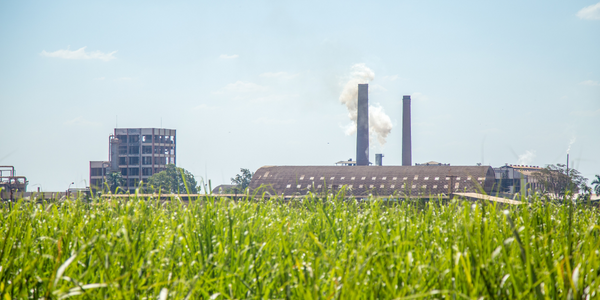Customer Company Size
Large Corporate
Region
- Europe
Country
- Germany
Product
- Blue Yonder’s space and floor solutions
- Planogram Generator
- Blue Yonder category management solutions
- Luminate Commerce portfolio
Tech Stack
- Data Analytics
- Automation
Implementation Scale
- Enterprise-wide Deployment
Impact Metrics
- Revenue Growth
- Productivity Improvements
- Waste Reduction
Technology Category
- Platform as a Service (PaaS) - Data Management Platforms
Applicable Industries
- Retail
- Food & Beverage
Applicable Functions
- Sales & Marketing
- Business Operation
Use Cases
- Inventory Management
- Predictive Replenishment
- Demand Planning & Forecasting
Services
- Data Science Services
- System Integration
About The Customer
Founded in 1984, Alnatura is an organic supermarket chain that operates 139 supermarkets in 65 cities across Germany. The company offers 6,000 products and has annual revenues of $1.28 billion. Alnatura must manage tight space constraints, while maximizing availability and minimizing stock-outs. This is challenging because of the diverse local preferences across its markets. Fresh foods are especially difficult to manage profitably due to the high costs associated with waste.
The Challenge
Alnatura, an organic supermarket chain operating 139 supermarkets across Germany, faced a challenge in managing its tight space constraints while maximizing product availability and minimizing stock-outs. This was particularly difficult due to the diverse local preferences across its markets and the high costs associated with waste in fresh foods. The company needed to drive more automation, greater accuracy and localization, and increased efficiency for its category management and space planning activities.
The Solution
Alnatura turned to Blue Yonder for a solution. Blue Yonder’s industry-leading space and floor solutions, including Planogram Generator, enabled Alnatura to build store-specific, space-aware, consumer-centric planograms that meet local demand with minimal inventory investments. Blue Yonder category management solutions leverage granular shopper insights, data analytics and automation to increase the accuracy and profitability of available space. Buying insights, store layouts, space and shelf availability are combined with category intelligence to grow shopper loyalty and increase basket size. Integrated within the Luminate Commerce portfolio, Blue Yonder solutions empower Alnatura’s category managers and space planners to work in collaboration, with complete visibility, resulting in increased revenues and availability.
Operational Impact
Quantitative Benefit

Case Study missing?
Start adding your own!
Register with your work email and create a new case study profile for your business.
Related Case Studies.

Case Study
The Kellogg Company
Kellogg keeps a close eye on its trade spend, analyzing large volumes of data and running complex simulations to predict which promotional activities will be the most effective. Kellogg needed to decrease the trade spend but its traditional relational database on premises could not keep up with the pace of demand.

Case Study
HEINEKEN Uses the Cloud to Reach 10.5 Million Consumers
For 2012 campaign, the Bond promotion, it planned to launch the campaign at the same time everywhere on the planet. That created unprecedented challenges for HEINEKEN—nowhere more so than in its technology operation. The primary digital content for the campaign was a 100-megabyte movie that had to play flawlessly for millions of viewers worldwide. After all, Bond never fails. No one was going to tolerate a technology failure that might bruise his brand.Previously, HEINEKEN had supported digital media at its outsourced datacenter. But that datacenter lacked the computing resources HEINEKEN needed, and building them—especially to support peak traffic that would total millions of simultaneous hits—would have been both time-consuming and expensive. Nor would it have provided the geographic reach that HEINEKEN needed to minimize latency worldwide.

Case Study
Improving Production Line Efficiency with Ethernet Micro RTU Controller
Moxa was asked to provide a connectivity solution for one of the world's leading cosmetics companies. This multinational corporation, with retail presence in 130 countries, 23 global braches, and over 66,000 employees, sought to improve the efficiency of their production process by migrating from manual monitoring to an automatic productivity monitoring system. The production line was being monitored by ABB Real-TPI, a factory information system that offers data collection and analysis to improve plant efficiency. Due to software limitations, the customer needed an OPC server and a corresponding I/O solution to collect data from additional sensor devices for the Real-TPI system. The goal is to enable the factory information system to more thoroughly collect data from every corner of the production line. This will improve its ability to measure Overall Equipment Effectiveness (OEE) and translate into increased production efficiencies. System Requirements • Instant status updates while still consuming minimal bandwidth to relieve strain on limited factory networks • Interoperable with ABB Real-TPI • Small form factor appropriate for deployment where space is scarce • Remote software management and configuration to simplify operations

Case Study
Energy Management System at Sugar Industry
The company wanted to use the information from the system to claim under the renewable energy certificate scheme. The benefit to the company under the renewable energy certificates is Rs 75 million a year. To enable the above, an end-to-end solution for load monitoring, consumption monitoring, online data monitoring, automatic meter data acquisition which can be exported to SAP and other applications is required.

Case Study
Coca Cola Swaziland Conco Case Study
Coco Cola Swaziland, South Africa would like to find a solution that would enable the following results: - Reduce energy consumption by 20% in one year. - Formulate a series of strategic initiatives that would enlist the commitment of corporate management and create employee awareness while helping meet departmental targets and investing in tools that assist with energy management. - Formulate a series of tactical initiatives that would optimize energy usage on the shop floor. These would include charging forklifts and running cold rooms only during off-peak periods, running the dust extractors only during working hours and basing lights and air-conditioning on someone’s presence. - Increase visibility into the factory and other processes. - Enable limited, non-intrusive control functions for certain processes.








